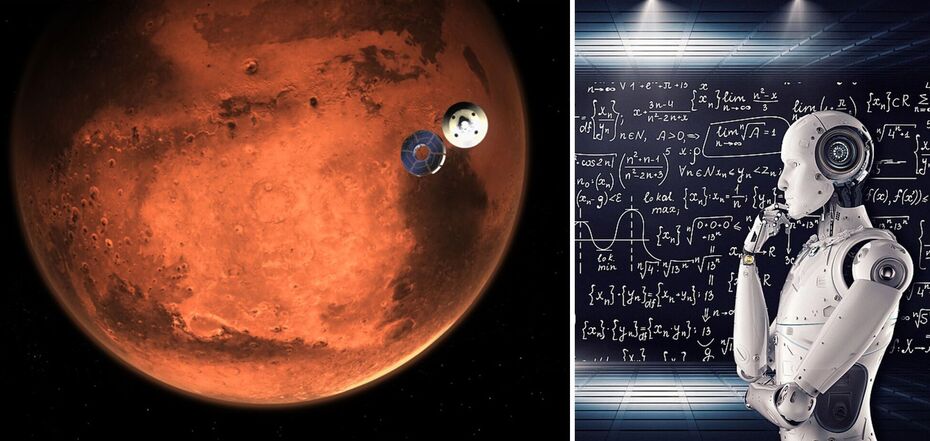Life
Scientists understood why people can't find life on Mars and taught a neural network to look for it
Mankind has probably been unable to detect signs of life on Mars, simply because it missed and didn't look too hard. Scientists were helped to understand this by research conducted in Chile's Atacama Desert.
About the results of their research and how to find extraterrestrial life, scientists told in their paper published in the journal Nature Astronomy, writes Inverse.
In Chile's Atacama Desert, in ancient times there was a large lake Payonales, of which there is now a dead wasteland. Even visually, it is difficult to distinguish it from photos from Mars. SETI Institute astrobiologist Kimberly Warren-Rhodes and her colleagues searched there for living bacteria and found an interesting trend. They were able to find that communities of bacteria and other microscopic organisms are located in tiny patches of habitable space, which can sometimes be as small as a few square centimeters.
Over millions of years, Lake Pajonales dried up, leaving behind a salt crust and several pockets of underground brine located on the border between Chile's Atacama Desert and the Altiplano Plateau.
The lake bed of more than 100 square kilometers has much in common with places on Mars, where scientists plan to look for evidence of extraterrestrial life: cold, salty, dry, and permeated with ultraviolet rays because of the high altitude above sea level. It's far from the most hospitable place on Earth, but it's quite suitable for superhardy microbial life.
When Warren-Rhodes and his colleagues surveyed a piece of the ancient lake floor, they found that only 9.2 percent of the area they surveyed was suitable for microscopic life. So if you look for bacteria in the wrong place, you might just miss the mark.
They noticed that the bare, flat ground was almost always lifeless, but salt mounds up to a meter high were home to life about 40% of the time. Also, bacterial colonies in 50% were found in strips of gypsum a few centimeters high. These two types of terrain, combined, accounted for only about one-third of the lake floor.
For those looking for life on Mars, these statistics mean that it will be very difficult to detect extraterrestrial bacteria.
When they began to study the "microenvironment," it turned out that bacteria were very fond of living in deposits of alabaster, a very porous and powdery kind of gypsum. It turned out that even small patches of alabaster were "almost universally inhabited. The internal structure of alabaster is full of tiny pores, ideal for holding water for as long as possible - and for transporting brine upward from underground.
The researchers used the findings to train a neural network to predict the chances of finding life in a particular location, from the scale of kilometers to centimeters. When the neural network was given a portion of the lake for testing, its prediction of the location of the bacteria was 70-90 percent accurate.
"While a random search yielded a 9.2% probability of detecting biosignatures, a targeted search guided by machine learning models provided up to an 87.5% probability of detecting biosignatures in the first sample," the researchers wrote.
Going forward, Warren-Rhodes and her colleagues also intend to study and catalog data on other habitats on Earth that bear a tentative resemblance to locations on Mars. Then, all obtained data will be transferred back to the neural network, which can later be used to search for life on Mars and other celestial bodies - Titan, Enceladus or Europe.
Previously OBOZREVATEL told about a group of scientists who believe they have discovered the signs of life on the red planet in a photo from Mars.
Subscribe to the channels of OBOZREVATEL in Telegram and Viber to keep up with the latest developments.




























